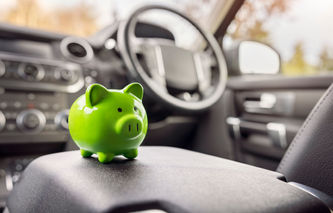When negotiating with a dealer, or reading through the terms and conditions of a car lease, the terminology can be pretty confusing. Even when looking through advertisements, it's sometimes hard to figure out what the dealer is saying.
If you've never leased a car before, and want a better understanding of the terms used in those contracts, this article can help. We've already published information that can help users to calculate the monthly payments associated with a car lease. That article addressed a number of the terms typically encountered with these agreements. This website even has a full line of car loan calculators that use these same terms.
This glossary is divided into several sections so users will better understand the end-to-end process. Generally, a car lease is structured in such a way the dealer can recoup, or recapture, the loss in the car's value over the term of the contract. The dealer also needs to charge the customer for the cost of the "borrowed" money or capital. So the first terms appearing in this list have to do with capitalized costs.
Gross Capitalized Costs
The gross capitalized costs are the total amount of capital, or money, which is part of the agreement. This is the starting point for all car lease calculations. Some of these costs are negotiated with the dealership, such as the base capitalized costs.
MSRP
MSRP is an abbreviation for the Manufacturer's Suggested Retail Price. This is also referred to as the "sticker" price of the car because the MSRP appears as a sticker in the window of every new car sold in America. Unless the car is in high demand, they are usually sold at a discount to the MSRP.
Base Capitalized Cost
The base capitalized cost is the negotiated price a buyer would be willing to pay for the car being leased. Nearly always, the base capitalized cost is less than the MSRP. This is the starting point for the lease calculations, before additional costs are added, and reductions are subtracted.
Additional Costs
The additional costs are "adders" to the base capitalized cost used to calculate the gross capitalized costs. The equation for this would be:
Gross Capitalized Costs = Base Capitalized Costs + Additional Lease Costs
Dealer Acquisition Fees
The dealer acquisition fee is perhaps the most common of the additional lease costs encountered. That's because nearly all new cars come with a charge that is usually in the $300 to $900 range. It's the money charged to a customer for the dealership to generate the contract.
Extended Warranties
When a car is returned under a lease, the dealership expects the vehicle to have "normal" wear and tear. If the agreement is for a term longer than the manufacturer's warranty (either in time or mileage), the lessee can pay a fee that extends the warranty until the end of the agreement.
Capitalized Cost Reductions
Items that are subtracted from the gross capitalized lease costs are known as capitalized cost reductions. These can be in the form of dealer incentives or a down payment, which is money paid up-front.
Down Payment
A down payment is probably the most common, and significant, of the capitalized cost reductions. This is money the person leasing the car would need to provide upfront. When an advertisement for a relatively high priced car has a seemingly low monthly lease payment, the contract requires a large down payment.
Trade-In Allowance
If a used car is sold to the dealer as part of the agreement, this trade-in allowance serves to reduce the capitalized costs of the lease. When negotiating, it's important to make sure a fair deal is obtained on a trade-in. Make sure it's clear what the dealership is paying for the car.
Adjusted or Net Capitalized Costs
The adjusted or net capitalized cost is the amount of money borrowed over the course of the lease. The formula below explains the relationship between all of these capitalized cost concepts:
Net Capitalized Costs = Gross Capitalized Costs - Capitalized Cost Reductions
Lease Calculation Terms
This next set of terms have to do with factors that are not negotiated with the dealer, but have an effect on the calculation of monthly payments charged.
Residual Value
The residual value of the car is an estimate of its value at the end of the lease. Many times, the lessee is permitted to purchase the vehicle for the residual value when the lease terminates. The lower the residual value quoted, the higher the monthly payments. That's because the monthly payments need to make up for the difference between the car's value at the start and its value at lease termination.
Money Factor
The money factor is equivalent to the annual percentage rate, or APR, for a car loan. The following calculation explains the relationship:
APR (%) = Money Factor x 2400
Knowing this relationship allows consumers to figure out if the dealership is offering a competitive rate of interest.
Term
The term is simply the duration, or length, of the lease; it is usually stated in years or months. Traditionally, the most common terms were 2 years (24 month), 3 years (36 month), and 4 years (48 months).
Sales Tax
If the lessee lives in a location where there is a state sales tax, then their monthly lease payment will reflect this charge.
Depreciation
Depreciation is the loss in the car's value over the course of the lease. It's possible to estimate the depreciation by using the following calculation:
Depreciation = Net Capitalized Cost - Residual Value
Depreciation is one of the major cost drivers of the monthly payment. For example, if there are two cars with the same starting value and one car depreciates at a slower rate, that car will have a lower monthly payment.
Finance or Rent Charge
The finance, or rent, charges are the total of all fees paid over the course of a car lease that relate to its decline in value. The finance charge can be calculated using the following formula:
Rent Charge = (Net Capitalized Cost + Residual Value) x Money Factor
Other Lease Terms
No glossary would be complete without a category of "other." These terms do not affect cost, but are other conditions, features, or terms and conditions of these agreements.
Closed End Lease
A closed end lease is one the lessee can "walk away" from at the end of the contract. There is no other monetary obligation at the end of this kind of lease, and the lessor assumes the risk, and reward, that a car's value is the same as originally estimated.
Open End Lease
With an open end lease, the customer is assuming the risk, and reward, that a car's value is the same as originally estimated. These types of leases are much more common in a business-to-business environment.
Security Deposit
Most leases include a security deposit, which is usually equal to one monthly payment. Security deposits are paid at the inception, or start, of a lease. Security deposits are also refundable if there is no significant or unusual damage to the vehicle.
Purchase Option Price
The purchase price should be the same as the car's residual value. If the lessee wishes to buy the car at the end of the lease, this is the price they would pay.
Gap Insurance
Gap insurance is designed to pay the outstanding balance owed on a lease in the event the car is involved in an accident, and the repair costs exceed its current market value.
Excess Mileage Charge
The terms and conditions of a lease normally entitle the holder to drive a specified number of miles. Typically, the allowance is anywhere from 5,000 to 15,000 miles per year. The excess mileage charge compensates the dealer when a car is driven in excess of the allowed miles, and the cost is usually stated in cents per mile.
Early Termination Fee
This is a fee charged by the dealership if the lessee decides they want to terminate the lease early. These early termination fees are more like penalties to the consumer. In fact, they can be thousands of dollars, and nearly equal to the cost of making all of the remaining monthly payments.

